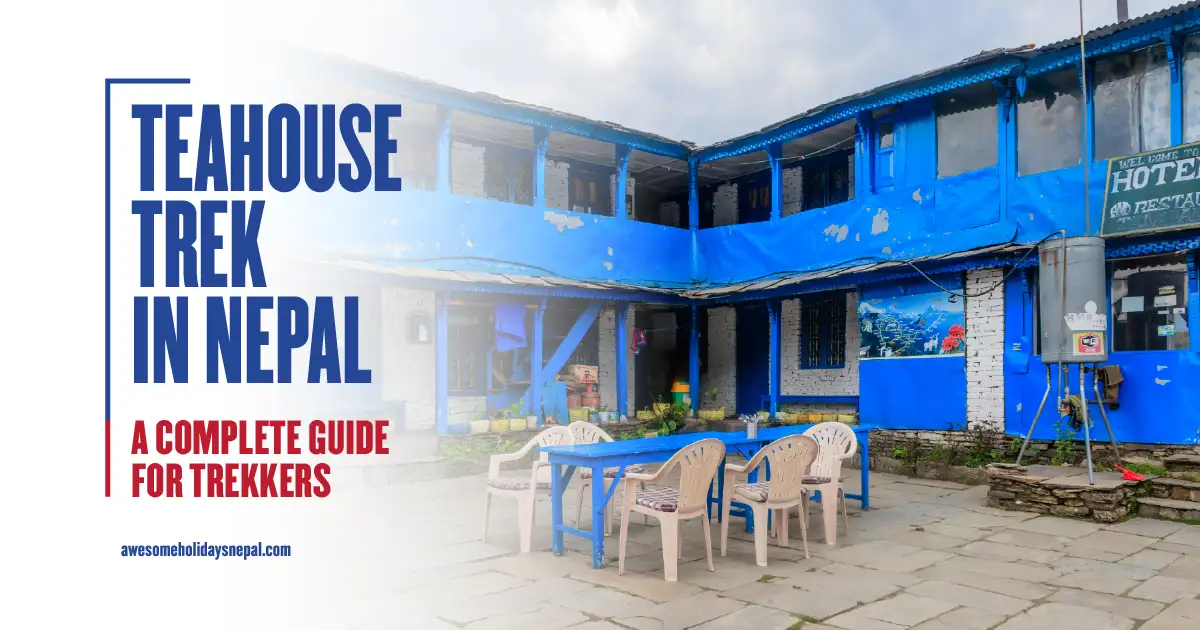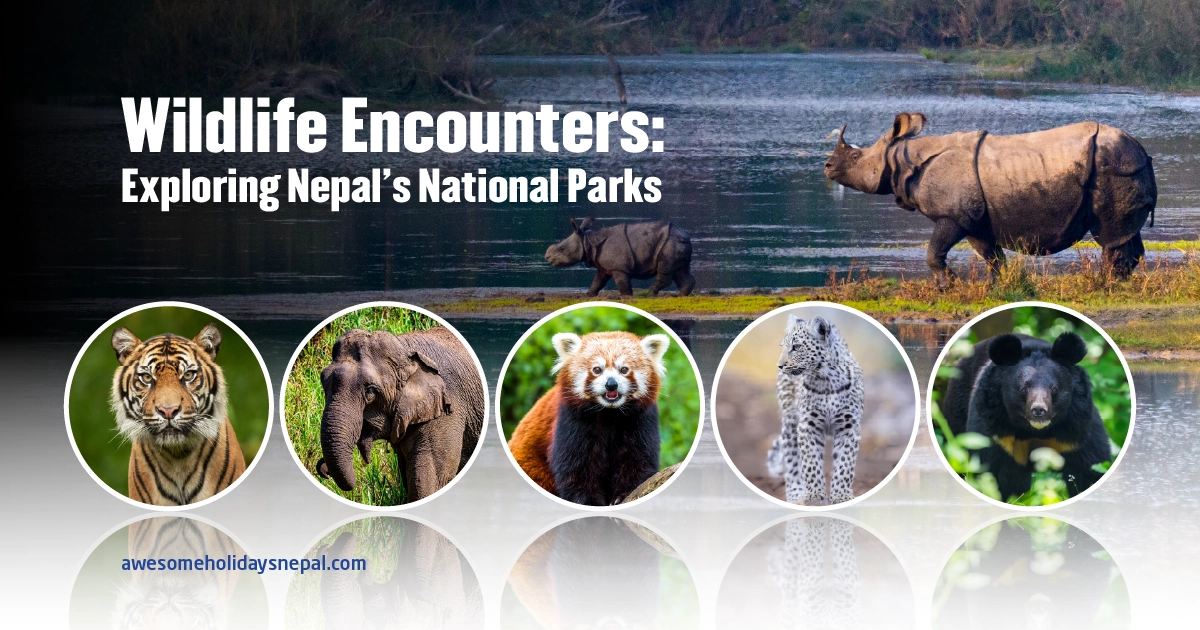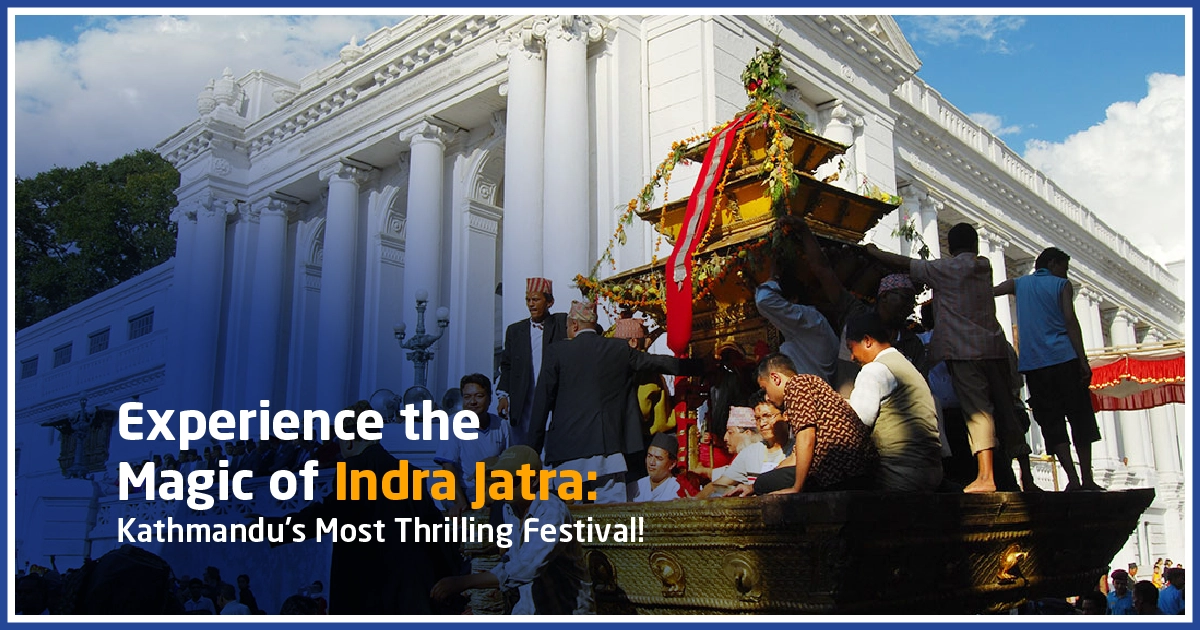Will There Be Sherpas on Everest after 10 Years?
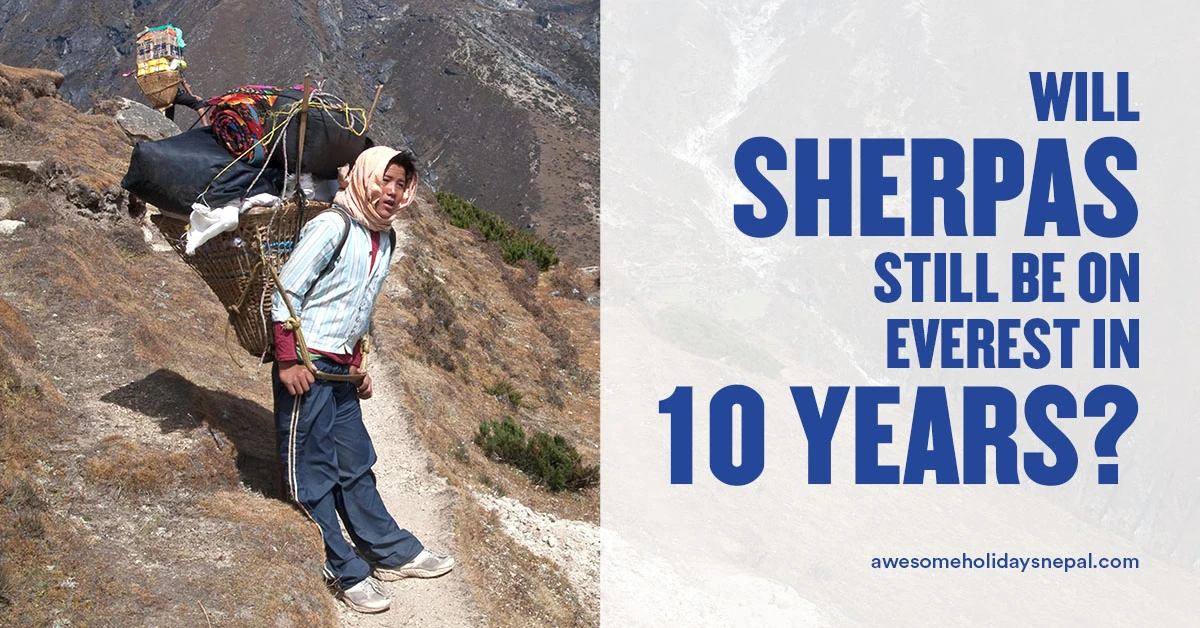
All mountaineering enthusiasts worldwide would agree when I say it was possible to ascend the Himalayas because there were Sherpas. But it is equally true that these handfuls of people behind the history in summits have been facing an existential crisis for so long. To prevent that from happening, one must find answers to the question, “Why do some Sherpas say there won’t be any Sherpas on Everest in 10 years?”
Before getting into this crucial topic, we must understand the difference between Sherpa and sherpa. With the capital “S,” Sherpa is a group of people of Tibetan ethnicity who live in the higher mountainous region of Nepal. Whereas, with a small “s,” sherpas are the workers of the expedition team who help in mountaineering and expeditions.
The sherpas do various tasks like setting up and packing tents, preparing and serving meals, carrying loads and oxygen cylinders, and climbing with the climbing members. They also ensure the safety of every tool, take care of the members, and help them if they are tired or sick.
History of Mountaineering and Sherpas on Everest
Mountaineering has a long history. Initiating from the European alpine style, Maurice Herzog, a French expeditioner, made the first recorded attempt to climb Annapurna I on June 3, 1950. This ascent was a milestone in drawing global attention to the Himalayas, and climbers worldwide endeavored to enter Nepal’s mountains. Then, the expedition industry boomed in Nepal.
Similarly, George Mallory and Andrew Irvine lost their lives in June 1924 while attempting to climb Mount Everest from the North Face. Two climbers, Sir Edmund Hillary and Tenzing Norgay Sherpa, later achieved the dream of reaching the top of Mount Everest in 1953. Everest became a symbol of human resilience and exploration. Tenzing Norgay and the Sherpa community gained international recognition for their invaluable role in Himalayan expeditions. The whole world learned about the bravery and endurance of the Sherpa people.
The expedition is always a risky adventure. Many people have lost their lives attempting to reach the summits of mountains. Many sherpas on Everest have died while trying to set up the expedition team. Hundreds of sherpas and mountaineers have died while attempting the climb to the summit of Mount Everest since the 1900s. Most of the bodies were discovered, and many of them have been retrieved, but a few are still waiting to be discovered in the deep glaciers of Everest.
Douglas A. Boneparth says, “Every dead body on Mt. Everest was once highly motivated, so maybe calm down.” Some of the famous persons who were demised on Mount Everest are Tsewang Paljor, Green Boots, David Sharp, Rob Hall and Doug Hansen, Scott Fischer, Hannelore Schmatz, Shriya Shah, “Klorfine,” George Mallory, Francys Arsentiev, and Francys Arsentiev, also known as The Sleeping Beauty.
Hierarchy of Expedition Crew and Their Roles
There are various layers and hierarchies of sherpa in the industry. Sirdar, leaders, climbing sherpa, trek sherpa, and personal sherpa are some of the stages of sherpa classified based on their job responsibilities. The Sirdar manages labor relations and coordinates logistics and supply. The Professional leader works with the sirdar, climbing sherpa, and personal sherpa. Climbing Sherpa looks after tasks like carrying loads, fixing camps, providing backup, and serving meals.
The Trek sherpa sets and packs camp, serves meals, and helps ensure nobody gets lost throughout the journey. Similarly, a Personal sherpa provides advice and walks side by side, assisting in climbing and descending. He is a personal helping hand to the client. These tasks are not free from risks to the sherpa.
They must carry stuff like oxygen bottles, tents, carabiners, and ropes from lower base camps to higher base camps. Ranging from Camp I to Camp IV and the top, preparing the climbers for acclimatization. They must ensure all items are set up for the expedition day and check all the cylinder valves, nozzles, masks, and O2 levels. If some crew members leave any items behind, the ascending sherpa must carry them with extra weight. Sometimes, the load may reach more than half a quintal.
The sherpa must help the team member change the carabiner, drink water, take off gloves, risking their own life to help the expedition client. Sherpa constantly checks whether the member has altitude sickness or not. When the guests are out of energy, they must secure their guests and bring them safely to the lower base camps.
Have you ever wondered how Mount Everest got its name? Click here to get your answer.
Fading Legacy: What motivates the Sherpa on Everest?
During an Everest expedition, climbers pay to take risks, while Sherpas on Everest take risks to get paid a better sum. The difference between the wealth of the climbers willing to pay a higher amount an
d the sherpa willing to risk their lives for bread and butter is what keeps the climbing industry alive.
The height above 5800m is a place of congestion. Due to excessive workload, the sherpa often feels weakness, headache, and exhaustion, and sometimes loses their life. It’s mentally and physically challenging, and all you need is greater power and motivation. Hence, the Power of Sherpa is highly appreciated by the world. The sherpa exchanged their physical power for handsome pay. For a sherpa, the thrill of reaching the top of the world and a handsome paycheck is the greatest motivation. The heroes also have a hard time. You have this courage and power when you are young, but you cannot do the task once you are old. After joining the expedition team, Sherpas on Everest consider eliminating the monotonous duties, but many remain resolute in their desire to improve their family’s lot.
Challenges and Risks for Sherpas on Everest
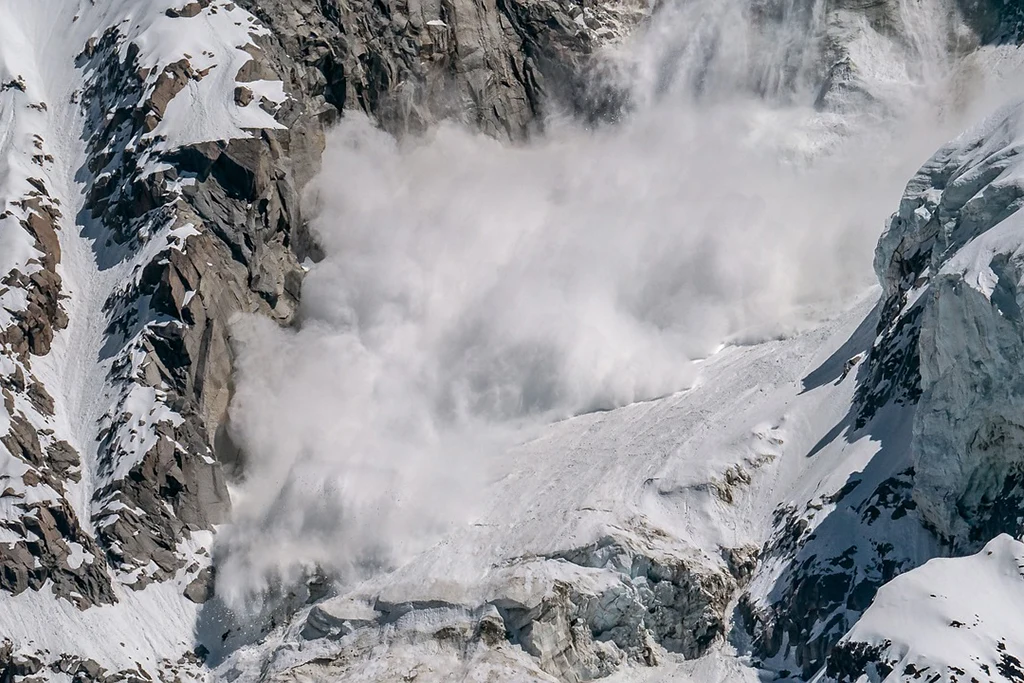
The changing weather, thin air, and sunburn are vivacious challenges in high altitudes. The Winds blow up to 60 km per hour. The Avalanche does not discriminate against any climber. It is equally life-threatening for all. Many sherpas cannot reach the top and have to lose their lives and return with the injured members.
The Roping crew climbs slopes and ridges to set up the ropes and ladders. In case of any accidents, the sherpa must initiate the rescue and recovery. When a climber dies while attempting the climb of Mt. Everest, it’s very tough to bring them down. Bringing them down is very costly and may also take other people’s lives.
Sherpas on Everest, Who Lost Their Life?
In 1984, two Nepali climbers died while searching for a German who had died descending the 29,028-foot peak in 1979. The dead bodies of a Nepalese police inspector, Yogendra Bahadur Thapa, and his guide, Ang Dorjee Sherpa, were found entangled in ropes.
Similarly, when Indian climber Goutam Ghosh, a police officer from Kolkata, died near the summit of Mount Everest. Dawa Finjhok Sherpa and his teammates rushed out for a retrieval plan, risking their own lives. The region above 8000m is called the “Death zone”, which is fatal due to lack of oxygen, frostbite, and cold.
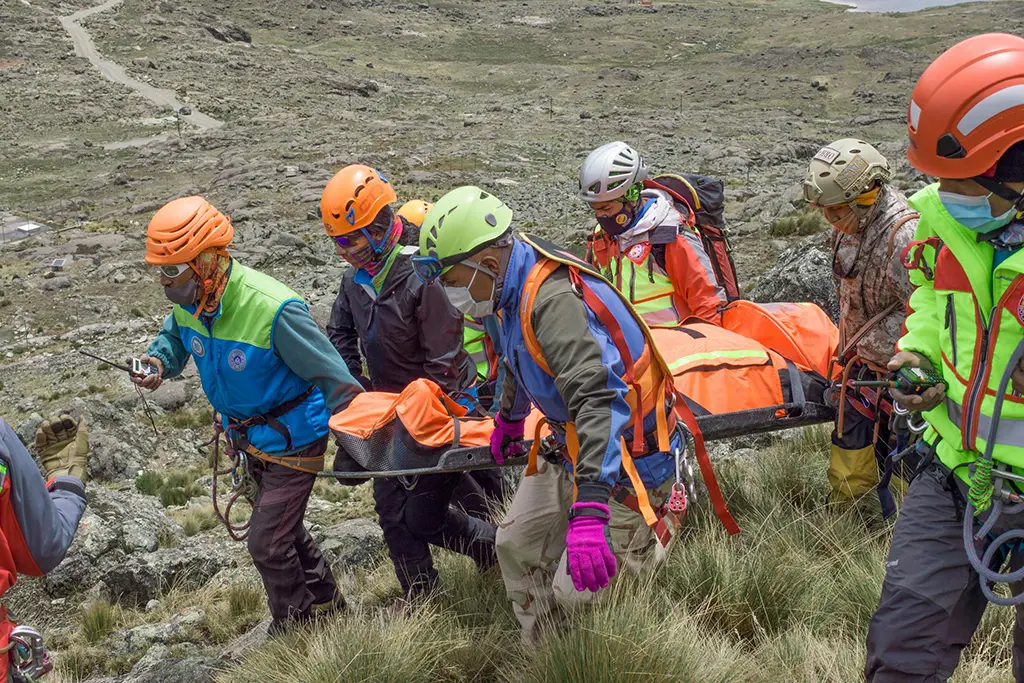
Dawa and four other Sherpas spent the next 28 hours working in the “death zone” without food or rest, trying to recover the body. Then, after a few more days, I went to base camp and finally handed over Ghosh’s body to his family in Kathmandu.
These are just a few examples.
Some experienced guides still participate in the industry, but have opted to leave at some point. Though the climbing costs rise frequently, guides’ yearly earnings remain inconsistent, and the current reimbursement per climb is often insufficient to cover the physical demands and safety gear costs.
More than a third of the people who have died on Everest since 1921 were mountain guides, and many of them were Sherpas. Many sherpa guides say the work is no longer worth it due to its Grueling nature. For many guides, the risks and costs associated with the job outweigh the rewards.
Note: Phurba Wangchhu Sherpa, a qualified registered Mountain Guide (Sardar) who has a record of 11 ascents of Mt. Everest and multiple ascents of other 8,000m peaks, reports that there will not be any left Sherpas on Everest in 10 years.”
What Are the Risks that Sherpas on Everest Are Facing?
From government discrepancies to social and financial vulnerability, Sherpas face many issues daily. Let’s discuss a few of them:
Government discrimination on Policies and Support.
Despite the vital role Sherpas play in Nepal’s mountaineering tourism, many argue that the Nepalese government has not provided sufficient support or protection for this community. Sherpas face significant risks on Everest, and while their contributions are celebrated worldwide, governmental policies often fail to address their needs adequately. Sherpa guides endure extreme physical risks.
Yet, government regulations often unexploited adequate compensation, insurance policies, and safety measures for these high-risk conditions. The insurance policy and return remain insufficient compared to the level of danger involved.
Sherpas often receive limited insurance payouts in case of injury or death, which can leave their families in financial crisis. Moreover, government funds generated from climbing permits rarely benefit Sherpa communities directly, even though their work is the backbone of the mountaineering industry.
Furthermore, Sherpas have advocated for better compensation, improved healthcare, and educational support for their children. Tragic incidents like the 2014 avalanche and 2015 earthquake highlighted the dangers Sherpas face, often without adequate compensation or safety measures.
Increasing Commercialization of Everest Expeditions
In recent years, the Everest expedition industry has increased accessibility, made Everest more popular, and attracted new climbers for name and fame. However, with this rise in commercialization, the risks for Sherpas, who are at the front lines of these expeditions, have become more complicated.
Guiding less-prepared climbers demands extra effort, including repeated acclimatization trips and equipment transport, further increasing Sherpas’ physical strain. Especially during peak seasons, the congestion and overcrowding on Everest push the sherpas and climbers to more severe conditions.
Mental and Physical Strain on Sherpa Families
On the other hand, the Sherpa family has to live a more complicated life. Every moment, they are more worried and always hoping for the return of their family members. The demands of being a Sherpa on Everest are physical and emotional, affecting entire families. The work is hazardous, with Sherpas facing a high risk of injury or death on each expedition.
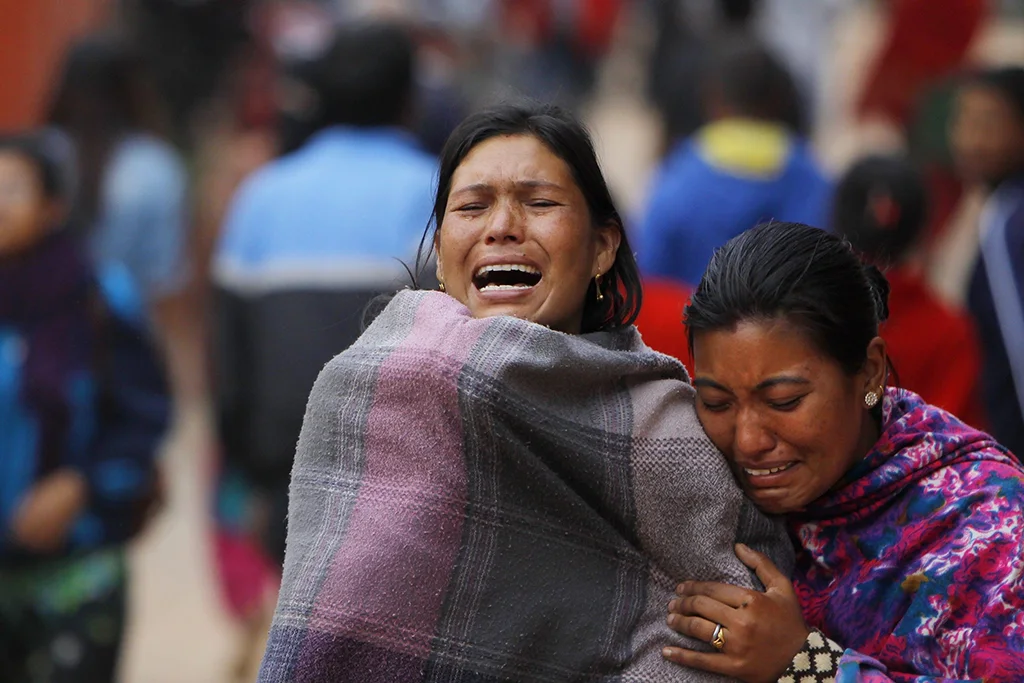
Families are left to worry each climbing season, fearing for the safety of their loved ones. This mental burden grows with each Everest trip and intensifies with every inch to the peak.
For families, the psychological toll can be deeper, especially for children who grow up with the constant fear that a parent may not return home. Widows and families of Sherpas lost on Everest often face financial hardship.
Shocking Truth: Health Risk for Sherpas on Everest
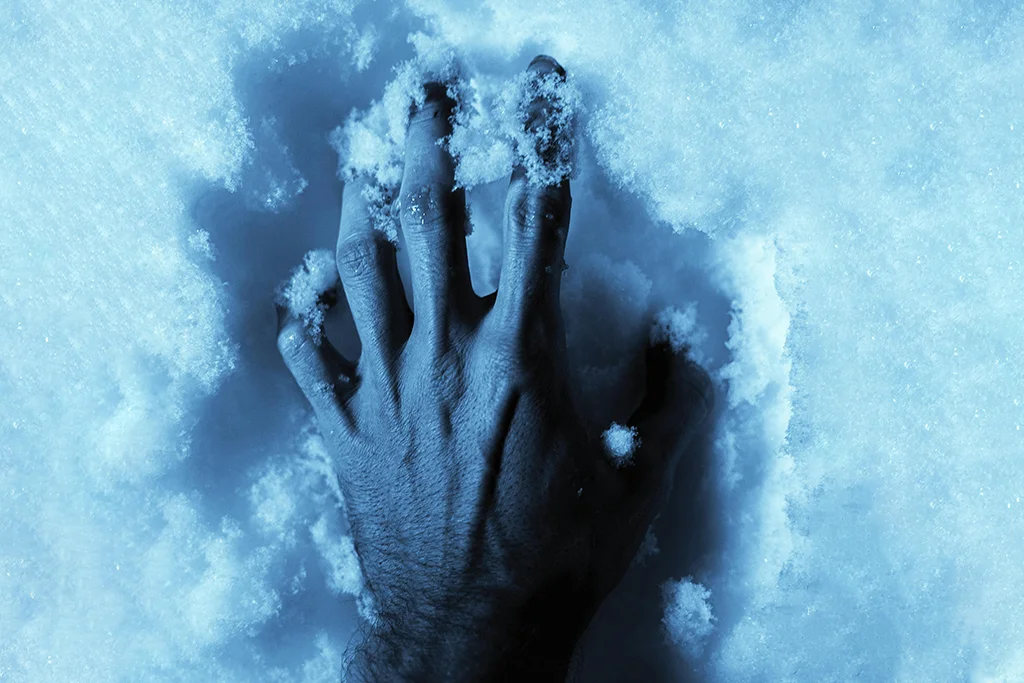
The physical toll on Sherpas is intense. Sherpa guides often work at altitudes where oxygen levels are dangerously low, causing hypoxia, high-altitude cerebral edema (HACE), and high-altitude pulmonary edema (HAPE).
Many Sherpas on Everest suffer from chronic health issues due to repeated exposure to high altitudes, including pulmonary and cardiovascular diseases. Despite these conditions, many sherpas on everest feel compelled to continue working to support their families, as there a limited well-paying options.
New Opportunities and Career Shifts for Sherpas on Everest
In Nepal’s expanding economy, the allure of the profession may be decreasing for younger generations as well, who now have broader career opportunities. Many young Sherpas on Everest are choosing higher education, with a chance to make new careers in hotels and hospitality, and decide to be entrepreneurs like trekking guides, lodge operators, and tourism entrepreneurs rather than porters or mountain guides. Higher education has empowered Sherpas on Everest to seek roles in tourism management, trekking, and eco-tourism projects that are less physically demanding. A large number of offspring of the Sherpa family are shifting abroad in search of a better life and better opportunities.
There are calls for better compensation and safety measures for high-altitude guides, but without significant change, there may be far fewer Sherpa guides on Everest in the coming years. The Sherpa community has begun exploring new career paths as education, technology, and tourism evolve in Nepal.
Despite the vital role Sherpas play on Everest during any expeditions, systemic challenges and changing aspirations signal a potential decline in their presence on the mountain. The future of Sherpas on Everest is uncertain due to undeniable physical dangers, insufficient government support, increasing commercialization, and shifting career opportunities.
Furthermore, Sherpas on Everest are exploring safer, alternative careers within tourism and pursuing higher education. Addressing these issues requires greater recognition, improved safety measures, and equitable compensation from the national level, ensuring the Sherpa community is supported in both current and evolving roles within Nepal’s tourism industry.
FAQs
Expand AllWho are the Sherpas on Everest?
Sherpas are an ethnic group from the Himalayan region of Nepal, renowned for their incredible mountaineering skills and endurance at high altitudes. On Everest, they serve as guides, porters, and essential team members during expeditions.
What role do Sherpas play in Everest expeditions?
Sherpas are the backbone of Everest climbs. They set up camps, fix ropes and ladders, carry oxygen and gear, assist climbers, and guide them to the summit safely.
How do Sherpas assist climbers on Mount Everest?
Sherpas carry the loads, pitch tents, and carry cooking utensils, and they also help in cooking, managing logistics, and leading the route. They are well familiar with the terrain and altitude, which makes them vital for success and safety.
Are Sherpas considered essential for summiting Mount Everest?
In a way, we can say climbing Everest is impossible without Sherpas. They are essential due to their expertise in altitude adaptation, route planning, and emergency response.
How many Sherpas have successfully summited Mount Everest?
Hundreds of Sherpas have summited Everest multiple times. Kami Rita Sherpa holds the record with 31 ascents as of 2025.
What is the significance of Sherpas in the history of Mount Everest expeditions?
Sherpas have played a crucial role since the earliest climbs, including Tenzing Norgay, who made the first successful ascent with Sir Edmund Hillary in 1953. Their contribution is unmatched in Everest’s history.
What is the history of the first Sherpa to summit Mount Everest?
Tenzing Norgay Sherpa made history on May 29, 1953, when he summited Everest with Sir Edmund Hillary, marking the first confirmed ascent.
Related blog posts
Discover a choice of tourist destinations loved by most of our visitors. Whether you're on a jungle safari to spot rare animals or walking through a world heritage site, these well-planned itineraries cover the major highlights of Nepal.


